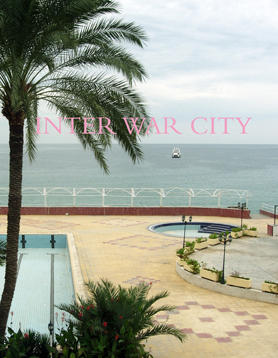Inter War City

Students: Elias Deger, Nikolaus Hamburger
Location: Beirut
Date: October, 2009
Type: Research project, student work
Background
War is not only a time of destruction. In Beirut, the civil war from 1975 to 1991 was an era of rapid urbanization, intense construction activities and a thorough transformation of the overall urban fabric. While rockets were being shot from neighborhood to neighborhood, high-rise buildings were erected and apartment blocks were put up. These activities took place close to the inner city as well as in the suburbs and in the new satellite towns along the coastline. The 16 years of civil war were as much about religious and ethnic strive as they were about making money.
Themes
During the civil war, Beirut, even though being one of the main hot spots of the fighting and killing, received an influx of large masses of refugees and internally displaced people, mostly from the southern parts of the country. The city grew tremendously. At the same time inner city fighting forced large parts of the population to move to the outskirts. The villages in the vicinity of Beirut transformed into suburbs, and later into an extensive strip of continuous urbanization reaching from Jounieh and beyond in the North to Damour in the South. and thus covering more than 40 km of coastline. While the Muslim population occupied more and more of the areas south of the city, the Christian population moved out of the city and into hill towns overlooking Beirut in the northeast, or along the coastal towns north of the city. As much as these settlements seem like an almost never-ending strip of banal shopping malls, apartment blocks, restaurants and infrastructural constructions, they represent an important phase in the self-understanding of the country. On the one hand they were a ‘proxy capital’ for the Christian population at a time that Beirut was largely inaccessible. On the other hand they expose the complex relationship between rural and urban ways of live in a country which has one of the highest degree of urbanization and where this dialectic between the rural and urban has to be fundamentally questioned.
Project
What is the urban idea of the ‘Inter-War City’? How has their role changed from the era of the civil war until today? What role do they perform today? Is there (still ?) a clear affiliation to factions, religions or population groups? While southern Beirut is often described as inhabited by fundamentalist Shia population, can the coastal strip be described as an area of militant Christian groups? How do politics (relating back to the civil war era?) influence urban development in these areas? Can this area be understood as a typical ‘Suburbia’, or a ‘Zwischenstadt’? What is the potential development, as a continuous urban strip over the length of the country?
Download the Book PDF

